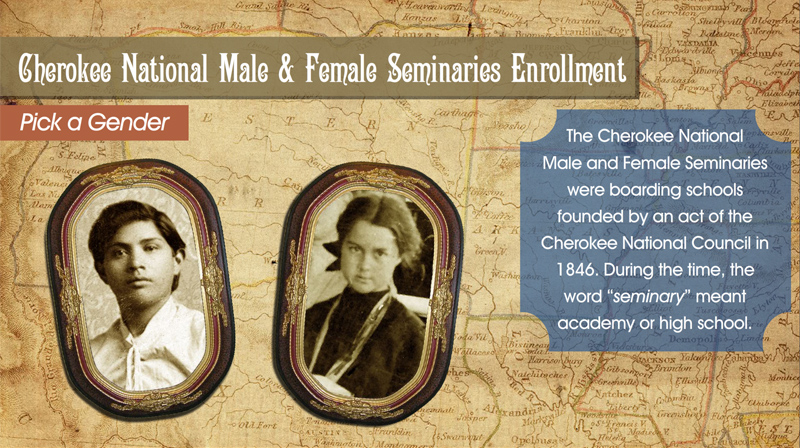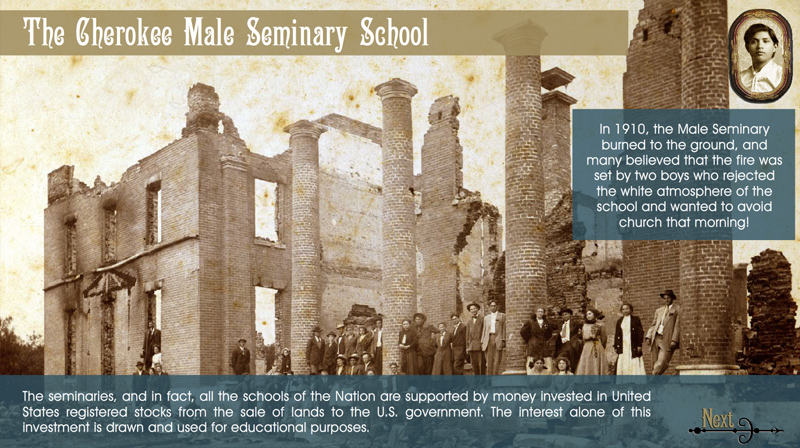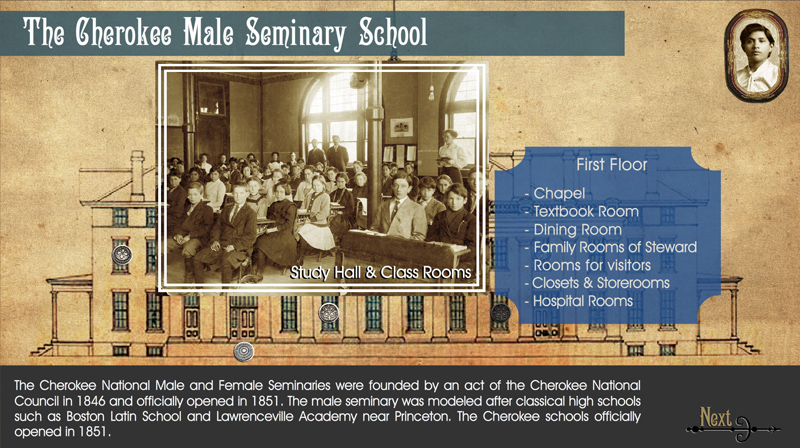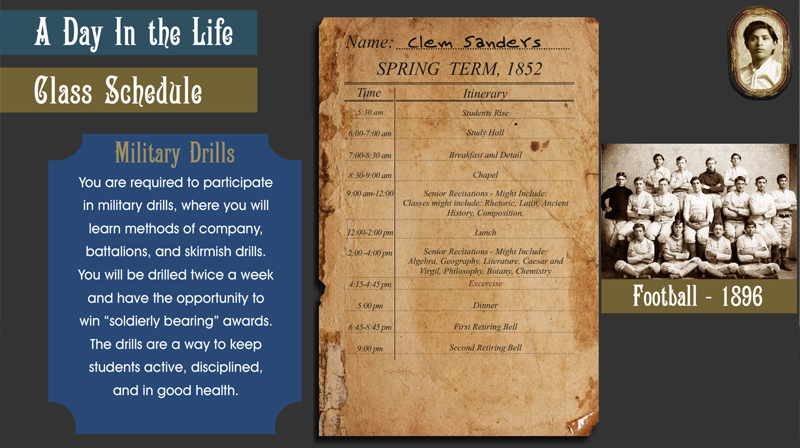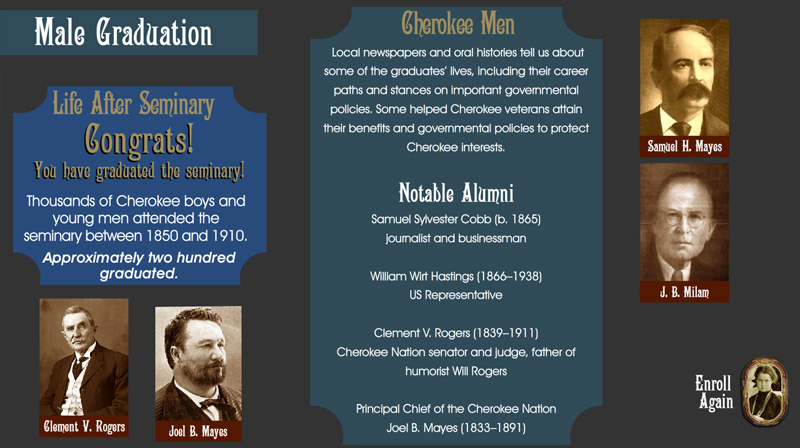Cherokee Seminary School
Project Overview: As an instructional designer, I undertook the task of conceptualizing and developing an engaging eLearning program for Cherokee Seminary School. This initiative, spearheaded by the Gilcrease Museum, aimed to educate individuals of all ages about the rich history of the Cherokee Nation in the 19th century. Through the exhibition titled “After Removal: Rebuilding the Cherokee Nation,” we set out to illuminate the contrasting facets of the human experience—discord and harmony, war and peace, success and failure—ultimately culminating in the establishment of a resilient foundation for the Cherokee people’s future.
Design Challenge: The challenge lay in transforming this intricate historical narrative into an accessible and captivating eLearning experience. Leveraging Flash, Adobe Illustrator, and Adobe Photoshop, I embarked on the mission to create an interactive journey that would captivate learners of all ages.
Approach to Design: My design approach followed a well-structured methodology:
- Content Analysis: I began by thoroughly analyzing the exhibition’s content. Collaborating closely with the education department at the Gilcrease Museum, we established a clear direction for the project, with the primary objective of enlightening patrons about the significance of seminary schools in Cherokee history.
- Conceptualization: After assimilating the historical nuances, I conceived the concept of “A Day in the Life of a Cherokee Seminary Student.” This concept revolved around immersive storytelling, with distinct narratives for boys and girls attending the seminary. Patrons had the freedom to choose the day and perspective they wished to explore.
- Development Phase: The program came to life through two meticulously crafted versions using Flash. Each version was tailored to the specific classes and schedules of the boys’ and girls’ schools. The programs underwent rigorous review, editing, and approval processes to ensure historical accuracy and educational effectiveness.
- Implementation: The final programs were thoughtfully loaded onto four touchscreen computers, strategically placed within the exhibition space. Extensive testing was conducted to gather user feedback and identify and resolve any potential issues.
This project was a testament to my passion for continuous learning and my commitment to creating immersive and interactive educational experiences for diverse audiences. The entire process, from concept to implementation, was not only seamless but also highly enjoyable.
Our efforts culminated in the publication of this engaging eLearning program by the Gilcrease Museum, contributing to a deeper understanding of Cherokee history and the enduring spirit of resilience.
